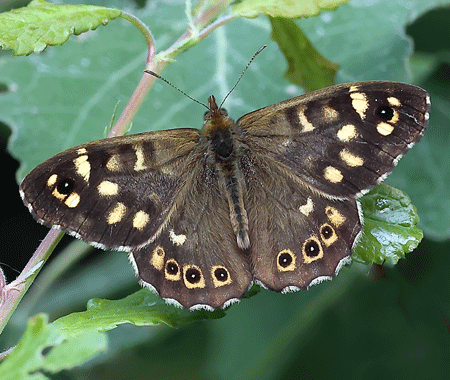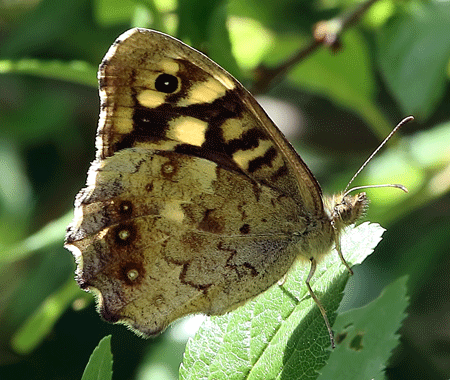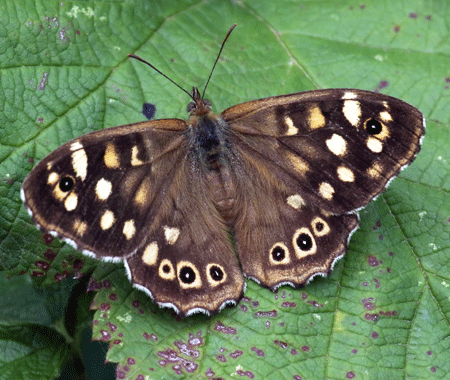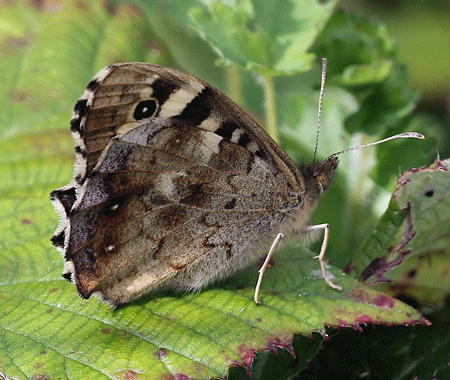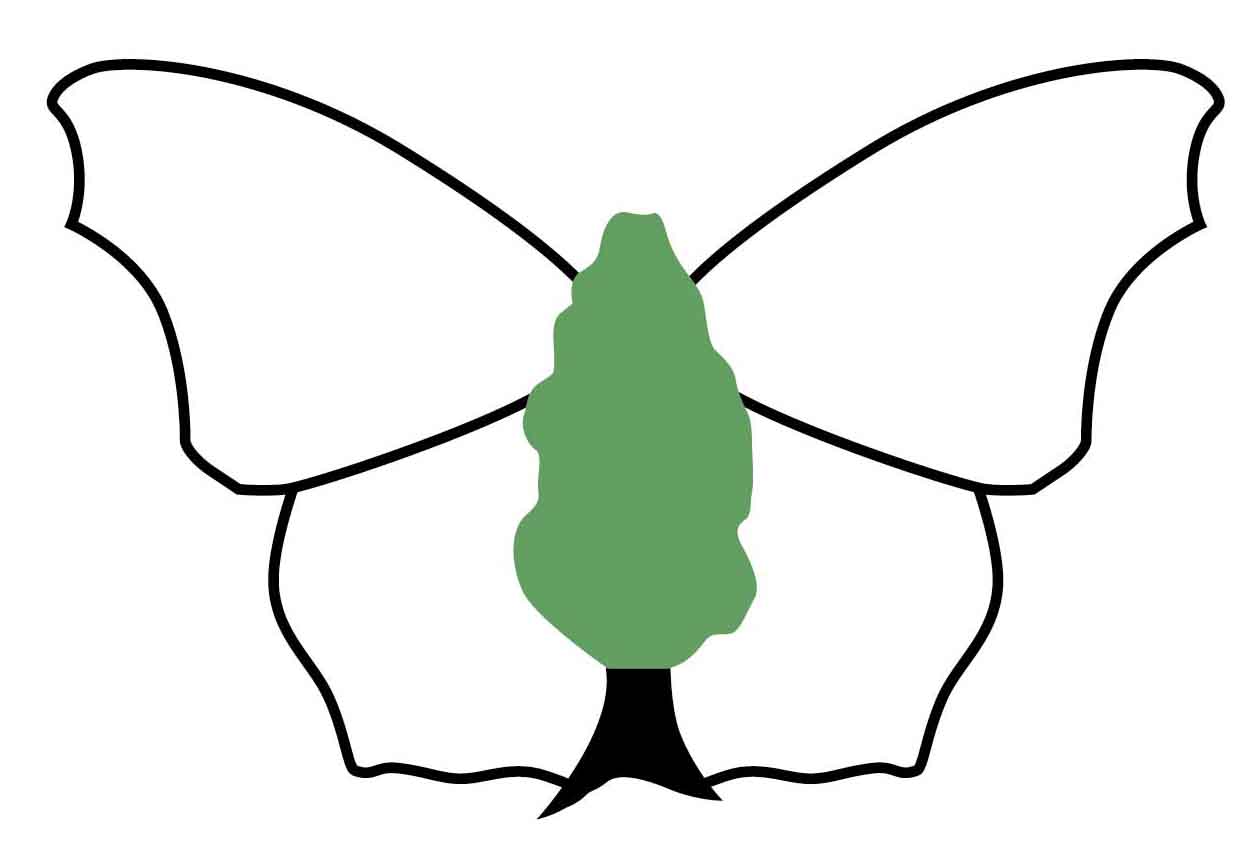 | Butterfly Conservation Saving butterflies, moths and our environment | Upper Thames Branch | 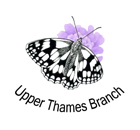 |
Speckled Wood (Pararge aegeria) | ||||||||||||||||||||||
| Description | ||||||||||||||||||||||
| Wing span: 40-45 mm. The Speckled Wood is a common butterfly. The sexes are similar. It is found throughout the British Isles except the extreme north of Scotland. Its habitat is deciduous, coniferous and mixed woodland, but it can be found anywhere there is sufficient scrub to provide the dappled shade that it favours. This includes gardens and hedgerows. | ||||||||||||||||||||||
| Images (click to enlarge) | ||||||||||||||||||||||
| ||||||||||||||||||||||
| Life Cycle | ||||||||||||||||||||||
| There are usually three generations per year. The first starts around the end of April, the second in July and the third in September. Both larvae and pupae over-winter, which makes the Speckled Wood unique among British butterflies. | ||||||||||||||||||||||
| Larval Foodplants | ||||||||||||||||||||||
| The main larval food plants are Cock's-foot (Dactylis glomerata), Common Couch (Elymus repens), False Brome (Brachypodium pinnatum) and Yorkshire-fog (Holcus lanatus). | ||||||||||||||||||||||
| Nectar Sources | ||||||||||||||||||||||
| Adults feed primarily on honeydew or sap. | ||||||||||||||||||||||
| UK Conservation Status | ||||||||||||||||||||||
| Least Concern | ||||||||||||||||||||||
| Earliest UTB first sighting (since 2004) : 16th January | ||||||||||||||||||||||
| Mean UTB first sighting (since 2004) : 29th March | ||||||||||||||||||||||
| Distribution and Sites | ||||||||||||||||||||||
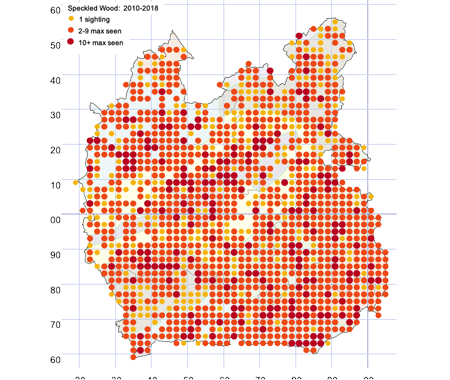 Key |
| |||||||||||||||||||||
| Related Species | ||||||||||||||||||||||
| ||||||||||||||||||||||
Copyright © Butterfly Conservation Upper Thames Branch 2025
Privacy and Copyright Statement
Butterfly Conservation : Company limited by guarantee, registered in England (2206468)
Registered Office: Manor Yard, East Lulworth, Wareham, Dorset, BH20 5QP, Tel: 01929 400 209
Charity registered in England & Wales (254937) and in Scotland (SCO39268)
Privacy and Copyright Statement
Butterfly Conservation : Company limited by guarantee, registered in England (2206468)
Registered Office: Manor Yard, East Lulworth, Wareham, Dorset, BH20 5QP, Tel: 01929 400 209
Charity registered in England & Wales (254937) and in Scotland (SCO39268)

